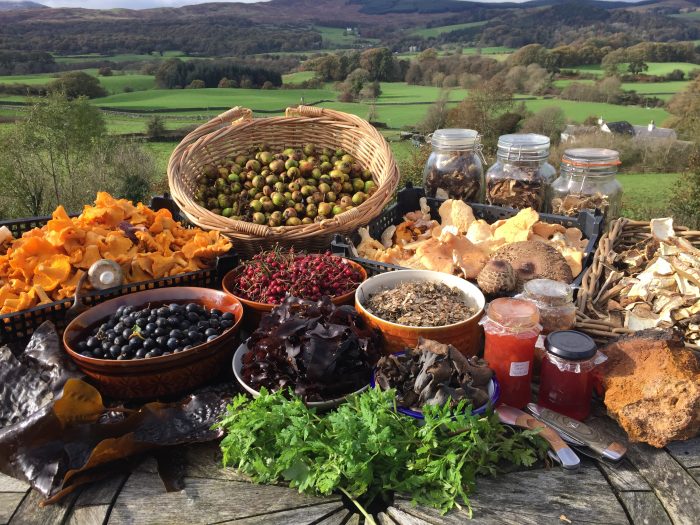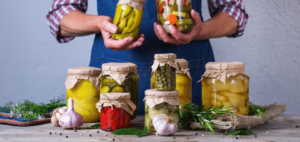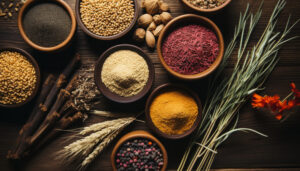In a world increasingly dominated by mass production and convenience, there’s a growing movement toward rediscovering ancient food traditions—particularly the art of foraging. Foraging, the practice of hunting for wild, edible plants and mushrooms, is an activity that has been practiced for thousands of years, but has recently experienced a resurgence among food enthusiasts, chefs, and environmentalists. Foraging is not just about seeking out wild ingredients; it’s about reconnecting with nature, embracing sustainability, and finding new, often underappreciated, ingredients that can elevate your cooking. In this article, we’ll delve into the world of foraging, highlighting its benefits, exploring what you can forage, and offering creative ideas for incorporating wild ingredients into your culinary repertoire.
Why Forage? The Case for Wild Foods
The benefits of foraging extend beyond just the thrill of discovery. Here are a few compelling reasons to embrace wild food harvesting:
- Sustainability: Foraging is one of the most sustainable ways to source food. Wild plants, mushrooms, and fruits grow naturally without the need for pesticides, fertilizers, or excessive water use. By harvesting responsibly and in moderation, you can enjoy the bounty of nature without contributing to environmental degradation.
- Flavors You Can’t Find in Supermarkets: Wild foods often have unique, more intense flavors that you can’t replicate with store-bought ingredients. For instance, wild herbs like wood sorrel or lemon balm have a sharper, more vibrant taste than their cultivated counterparts. These flavors can add an unexpected twist to your dishes and elevate your culinary creations.
- Health Benefits: Many wild plants are packed with nutrients that are often more potent than their domesticated relatives. Wild garlic, nettles, dandelion greens, and other foraged herbs are rich in antioxidants, vitamins, and minerals. By incorporating these foods into your meals, you’re not just eating fresh, seasonal produce, but also nourishing your body with nature’s most wholesome offerings.
- A Connection to Nature: Foraging encourages you to get outdoors and engage with your environment in a meaningful way. It’s a mindfulness practice that helps you better understand the ecosystems around you, appreciate the biodiversity of your local area, and make more conscious decisions about the food you consume.
What Can You Forage?
Foraging opens up a whole new world of flavors, textures, and experiences. Some wild ingredients can be foraged year-round, while others are seasonal. Below are some popular wild foods you might consider hunting for in your area:
- Wild Greens: Wild greens are among the easiest and most accessible foraged foods. Common wild greens include dandelion leaves, lamb’s quarters, and purslane. These leaves are often used in salads, soups, and sautéed dishes. They tend to have a more robust and sometimes bitter flavor compared to cultivated greens, but they bring a freshness that can’t be matched.
- Mushrooms: Mushrooms are one of the most exciting and rewarding categories of foraged foods, but they require a careful, educated approach. Edible varieties like chanterelles, morels, and oyster mushrooms can be found in the wild, but it’s crucial to have a guide or expert knowledge to avoid poisonous varieties like Amanitas. Mushrooms can be sautéed, added to soups, or even turned into a flavorful broth.
- Berries: Many wild berries are packed with antioxidants and are a delicious addition to a variety of dishes. Blackberries, raspberries, elderberries, and wild strawberries are just a few examples. You can eat them raw, add them to smoothies, or incorporate them into jams, jellies, or desserts.
- Wild Garlic and Onions: Wild garlic (also known as ramps) and wild onions are highly aromatic plants found in woodlands and fields. They can be used in cooking in the same way as cultivated garlic or onions, but their flavors are often more delicate and nuanced. Wild garlic leaves can be used in pesto, salads, or as a seasoning for soups and stews.
- Edible Flowers: Flowers are not only beautiful to look at, but many are also edible. Violet flowers, nasturtiums, and elderflower are just a few examples of wild blossoms that can be used to garnish dishes, make herbal teas, or create unique syrups. Some flowers, like dandelions, can even be used in cooking and baking.
- Nuts: In certain areas, foraging for nuts such as acorns, hickory nuts, or chestnuts can be a rewarding endeavor. These nuts can be used in a variety of ways, from making nut butter to adding to salads or baked goods. However, it’s important to note that acorns require processing to remove tannins before they are edible.
Foraging Safety: Know What You’re Picking
Foraging can be a fun and rewarding activity, but it’s essential to ensure you’re picking safe, edible plants and mushrooms. Some plants and mushrooms can be toxic, and consuming the wrong ones can have serious health consequences. Here are a few tips for safe foraging:
- Educate Yourself: Before you head out, it’s important to learn how to properly identify edible plants and mushrooms. Invest in a good foraging guidebook, or consider joining a foraging group or taking a foraging course with an experienced guide. Many areas also offer foraging workshops that can provide you with hands-on experience.
- Start Simple: If you’re new to foraging, start with easy-to-identify plants like dandelions or wild garlic. Avoid foraging more complex or potentially dangerous items, such as mushrooms, until you’ve gained more experience and confidence.
- Use Multiple Resources: Cross-reference information from multiple sources to ensure that what you’re harvesting is safe to eat. Photographs, field guides, and expert advice are all essential for accurate identification.
- Harvest Responsibly: Be mindful of the environment when foraging. Only take what you need, and leave enough for the plant or mushroom to regenerate for the next season. Always follow local regulations regarding foraging, and avoid picking in protected or restricted areas.
How to Cook with Foraged Ingredients
Once you’ve gathered your wild ingredients, it’s time to get creative in the kitchen! Here are a few ideas for incorporating your foraged finds into meals:
- Wild Herb Salad: Combine dandelion greens, wild garlic leaves, and other edible herbs into a unique, nutrient-packed salad. Top with a homemade vinaigrette made with wild mustard or herbs from your garden.
- Wild Mushroom Risotto: If you’ve foraged for mushrooms, consider making a creamy wild mushroom risotto. Use wild mushrooms like chanterelles, morels, or oyster mushrooms to give the dish a rich, earthy flavor.
- Wild Berry Jam: Use foraged wild berries, such as raspberries or blackberries, to make your own jam or preserve. This is a great way to capture the seasonal flavors and enjoy them throughout the year.
- Edible Flower Garnish: Add a pop of color and flavor to your dishes with edible flowers. Nasturtiums, violets, and marigolds can be used to decorate cakes, salads, or cocktails.
- Herbal Tea: Many wild plants, such as nettles, mint, and chamomile, make fantastic herbal teas. Simply steep the fresh leaves in hot water and enjoy the aromatic, soothing brew.
Conclusion
Foraging offers a fresh, exciting way to experience nature and diversify your diet. From wild greens to mushrooms and berries, the world around us is full of untapped culinary potential waiting to be discovered. Not only does foraging allow you to enjoy new, bold flavors, but it also helps you connect with nature and embrace sustainable food practices. Whether you’re an experienced forager or just starting out, there’s a wealth of wild foods to explore—and the adventure of discovery is just as rewarding as the meal itself. So, grab your basket, head outside, and let nature’s pantry inspire your next culinary masterpiece.





